-
 Bitcoin
Bitcoin $106,754.6083
1.33% -
 Ethereum
Ethereum $2,625.8249
3.80% -
 Tether USDt
Tether USDt $1.0001
-0.03% -
 XRP
XRP $2.1891
1.67% -
 BNB
BNB $654.5220
0.66% -
 Solana
Solana $156.9428
7.28% -
 USDC
USDC $0.9998
0.00% -
 Dogecoin
Dogecoin $0.1780
1.14% -
 TRON
TRON $0.2706
-0.16% -
 Cardano
Cardano $0.6470
2.77% -
 Hyperliquid
Hyperliquid $44.6467
10.24% -
 Sui
Sui $3.1128
3.86% -
 Bitcoin Cash
Bitcoin Cash $455.7646
3.00% -
 Chainlink
Chainlink $13.6858
4.08% -
 UNUS SED LEO
UNUS SED LEO $9.2682
0.21% -
 Avalanche
Avalanche $19.7433
3.79% -
 Stellar
Stellar $0.2616
1.64% -
 Toncoin
Toncoin $3.0222
2.19% -
 Shiba Inu
Shiba Inu $0.0...01220
1.49% -
 Hedera
Hedera $0.1580
2.75% -
 Litecoin
Litecoin $87.4964
2.29% -
 Polkadot
Polkadot $3.8958
3.05% -
 Ethena USDe
Ethena USDe $1.0000
-0.04% -
 Monero
Monero $317.2263
0.26% -
 Bitget Token
Bitget Token $4.5985
1.68% -
 Dai
Dai $0.9999
0.00% -
 Pepe
Pepe $0.0...01140
2.44% -
 Uniswap
Uniswap $7.6065
5.29% -
 Pi
Pi $0.6042
-2.00% -
 Aave
Aave $289.6343
6.02%
Is triple top pattern more accurate than double top? Key points for identifying complex tops
Triple top patterns are more reliable than double tops in crypto trading, requiring three resistance hits for stronger reversal signals.
Jun 15, 2025 at 02:57 am
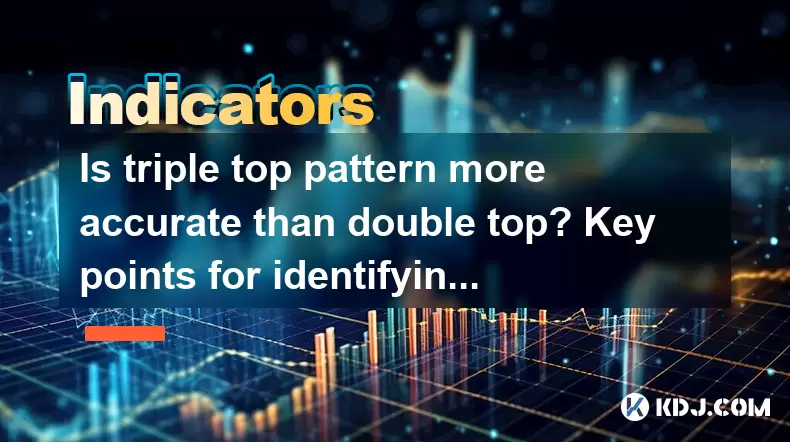
The concept of chart patterns in cryptocurrency trading is crucial for traders looking to predict potential price movements. Among these patterns, the double top and triple top are popular for identifying potential reversals in an asset's price. This article delves into the accuracy of the triple top pattern compared to the double top and provides key points for identifying complex tops.
Understanding Double Top and Triple Top Patterns
Double Top Pattern: A double top pattern occurs when the price of an asset reaches a high point, declines, and then rises back to the same high point before declining again. This pattern resembles the letter 'M' and is considered a bearish reversal pattern, indicating that the upward trend may be exhausting.
Triple Top Pattern: A triple top pattern is similar to the double top but occurs when the price hits the same resistance level three times before declining. This pattern is also considered a bearish reversal signal and is seen as more significant due to the additional test of the resistance level.
Accuracy Comparison: Triple Top vs. Double Top
The accuracy of these patterns can vary based on several factors, including the asset's volatility and market conditions. Generally, the triple top pattern is considered more reliable than the double top because it requires the price to hit the resistance level three times, indicating stronger resistance and a higher likelihood of a reversal.
However, the accuracy of both patterns can be influenced by the following factors:
- Volume: Higher volume during the formation of these patterns can increase their reliability. For instance, if the volume increases as the price hits the resistance level, it suggests stronger selling pressure.
- Time Frame: Patterns identified on longer time frames, such as daily or weekly charts, tend to be more reliable than those on shorter time frames.
- Confirmation: Both patterns require confirmation of the reversal, typically through a break below the neckline (the lowest point between the tops).
Key Points for Identifying Complex Tops
Identifying complex tops, such as double and triple tops, requires careful analysis of price action and other technical indicators. Here are key points to consider:
- Resistance Levels: The most crucial aspect of identifying these patterns is the clear establishment of a resistance level. The price should hit this level multiple times without breaking through it.
- Neckline: The neckline is the lowest point between the tops. A break below this level confirms the pattern and signals a potential reversal.
- Price Action: Look for signs of weakening bullish momentum, such as smaller peaks or a failure to reach the previous high, which can indicate that a reversal is imminent.
- Technical Indicators: Using indicators like the Relative Strength Index (RSI) or Moving Average Convergence Divergence (MACD) can provide additional confirmation of the pattern. For instance, a bearish divergence on the RSI can strengthen the case for a reversal.
Practical Steps to Identify and Trade Triple Top Patterns
To effectively identify and trade triple top patterns, follow these steps:
- Identify the Pattern: Look for three distinct peaks at approximately the same price level. Ensure that the peaks are separated by troughs.
- Draw the Neckline: Connect the lowest points between the peaks to form the neckline. This line is crucial for confirming the pattern.
- Wait for Confirmation: A break below the neckline confirms the pattern. It's essential to wait for this confirmation before taking any trading actions.
- Set Entry and Exit Points: Once the pattern is confirmed, set your entry point just below the neckline. The target price can be calculated by measuring the distance from the highest peak to the neckline and projecting that distance downward from the breakout point.
- Use Stop-Loss Orders: To manage risk, place a stop-loss order just above the last peak of the triple top. This helps limit potential losses if the price unexpectedly reverses.
Examples of Triple Top Patterns in Cryptocurrency Markets
To illustrate the application of the triple top pattern in cryptocurrency trading, consider the following examples:
- Bitcoin (BTC): In early 2021, Bitcoin exhibited a triple top pattern around the $60,000 resistance level. The price hit this level three times before breaking below the neckline, leading to a significant price drop.
- Ethereum (ETH): In late 2020, Ethereum formed a triple top pattern around the $450 resistance level. After the third peak, the price broke below the neckline, confirming the pattern and resulting in a downward trend.
Common Mistakes to Avoid When Trading Top Patterns
When trading double and triple top patterns, traders should be aware of common pitfalls that can lead to poor decision-making:
- Premature Entry: Entering a trade before the pattern is confirmed can lead to losses if the price does not break below the neckline as expected.
- Ignoring Volume: Failing to consider the volume during the formation of the pattern can result in misjudging its reliability.
- Overlooking False Breakouts: Sometimes, the price may break below the neckline temporarily but then recover. It's important to wait for a sustained break below the neckline before entering a trade.
Frequently Asked Questions
Q1: Can double and triple top patterns be used for short-term trading?
Yes, these patterns can be used for short-term trading, but they are generally more reliable on longer time frames. Traders using these patterns for short-term trades should be cautious and use additional technical indicators to confirm the pattern.
Q2: How do I know if a triple top pattern is forming on a cryptocurrency chart?
To identify a triple top pattern, look for three peaks at approximately the same price level, separated by troughs. The pattern is confirmed when the price breaks below the neckline, which is the lowest point between the peaks.
Q3: What other technical indicators can I use to confirm a triple top pattern?
In addition to the pattern itself, you can use indicators like the Relative Strength Index (RSI) and Moving Average Convergence Divergence (MACD). A bearish divergence on these indicators can provide additional confirmation of the pattern.
Q4: Are there any specific cryptocurrencies where triple top patterns are more common?
Triple top patterns can occur in any cryptocurrency, but they are more commonly observed in highly traded and volatile assets like Bitcoin and Ethereum due to their large market caps and high liquidity.
Disclaimer:info@kdj.com
The information provided is not trading advice. kdj.com does not assume any responsibility for any investments made based on the information provided in this article. Cryptocurrencies are highly volatile and it is highly recommended that you invest with caution after thorough research!
If you believe that the content used on this website infringes your copyright, please contact us immediately (info@kdj.com) and we will delete it promptly.
- 2025-W Uncirculated American Gold Eagle and Dr. Vera Rubin Quarter Mark New Products
- 2025-06-13 06:25:13
- Ruvi AI (RVU) Leverages Blockchain and Artificial Intelligence to Disrupt Marketing, Entertainment, and Finance
- 2025-06-13 07:05:12
- H100 Group AB Raises 101 Million SEK (Approximately $10.6 Million) to Bolster Bitcoin Reserves
- 2025-06-13 06:25:13
- Galaxy Digital CEO Mike Novogratz Says Bitcoin Will Replace Gold and Go to $1,000,000
- 2025-06-13 06:45:13
- Trust Wallet Token (TWT) Price Drops 5.7% as RWA Integration Plans Ignite Excitement
- 2025-06-13 06:45:13
- Ethereum (ETH) Is in the Second Phase of a Three-Stage Market Cycle
- 2025-06-13 07:25:13
Related knowledge
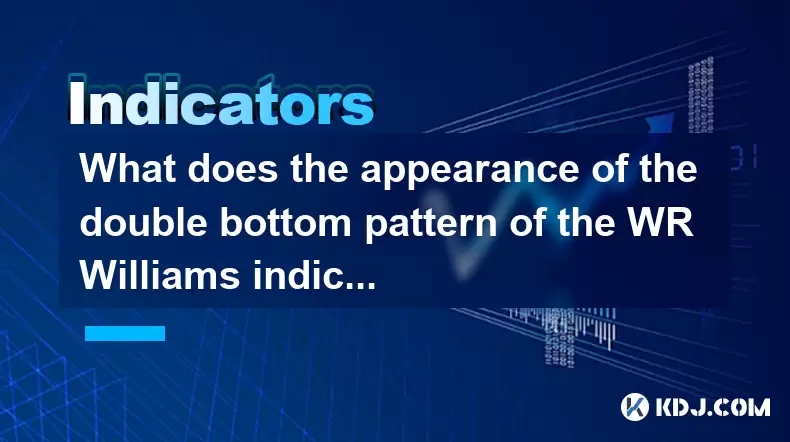
What does the appearance of the double bottom pattern of the WR Williams indicator mean? Can I buy the bottom?
Jun 16,2025 at 01:01pm
Understanding the WR Williams IndicatorThe WR (Williams %R) is a momentum oscillator used in technical analysis to identify overbought and oversold levels in trading. Developed by Larry Williams, this indicator oscillates between 0 and -100. A reading above -20 typically indicates overbought conditions, while a reading below -80 signals oversold territo...
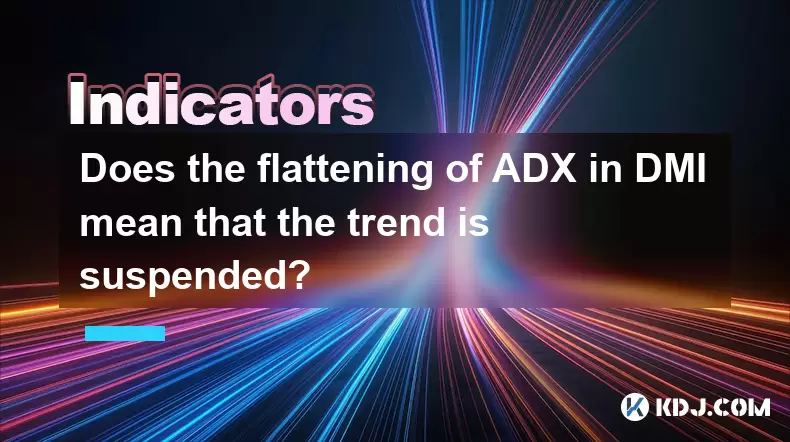
Does the flattening of ADX in DMI mean that the trend is suspended?
Jun 16,2025 at 02:07pm
Understanding the ADX and DMI IndicatorsThe ADX (Average Directional Index) is part of the DMI (Directional Movement Index) system developed by J. Welles Wilder to measure trend strength. The DMI itself consists of three components: the +DI (Positive Directional Indicator), -DI (Negative Directional Indicator), and the ADX line. While the +DI and -DI he...
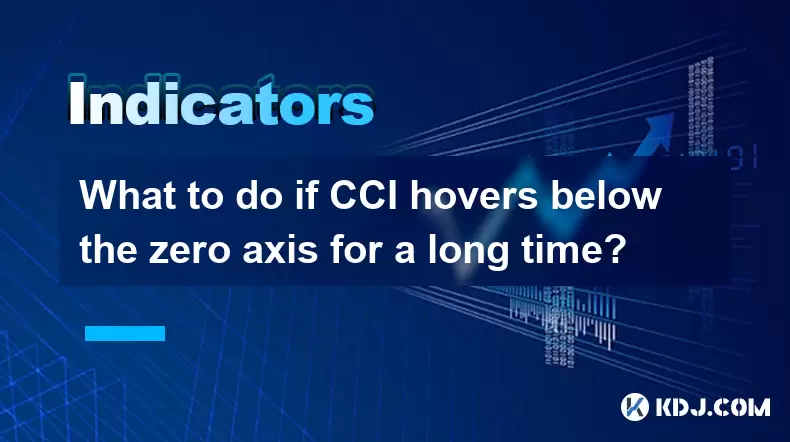
What to do if CCI hovers below the zero axis for a long time?
Jun 16,2025 at 04:05pm
Understanding the CCI Indicator in Cryptocurrency TradingThe Commodity Channel Index (CCI) is a versatile technical indicator used extensively in cryptocurrency trading to identify overbought or oversold conditions, as well as potential trend reversals. When the CCI hovers below the zero axis for an extended period, it can signal a prolonged bearish sen...
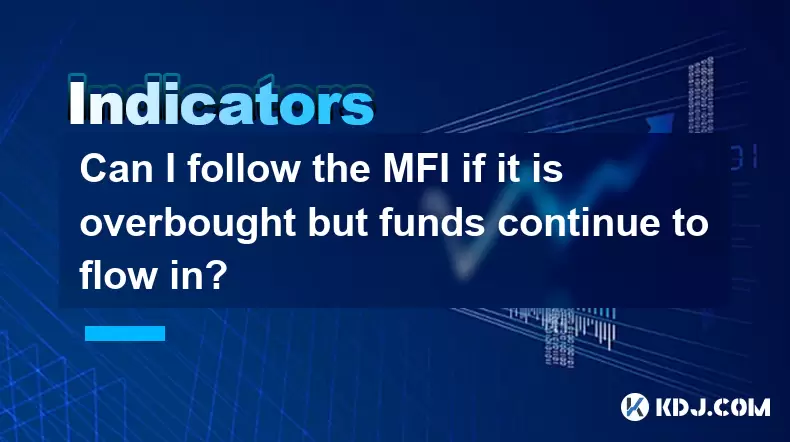
Can I follow the MFI if it is overbought but funds continue to flow in?
Jun 16,2025 at 03:07pm
Understanding the MFI Indicator in Cryptocurrency TradingThe Money Flow Index (MFI) is a technical indicator used extensively in cryptocurrency trading to measure buying and selling pressure. It combines price and volume data to assess overbought or oversold conditions. Typically, an MFI reading above 80 indicates overbought territory, while below 20 su...
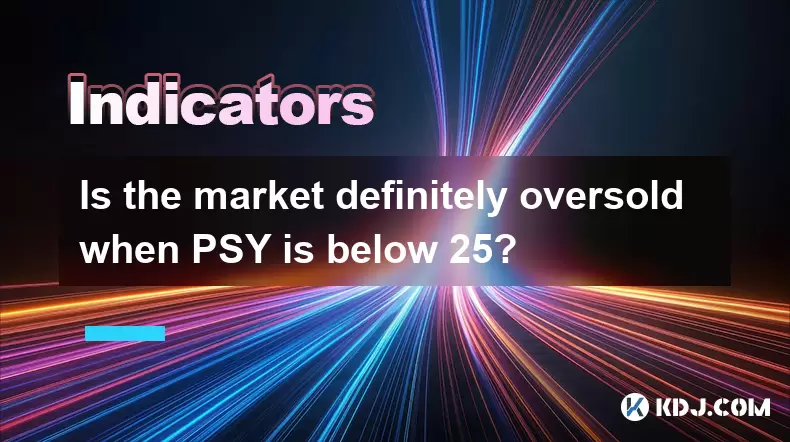
Is the market definitely oversold when PSY is below 25?
Jun 16,2025 at 03:43pm
Understanding the Psychological Line (PSY) IndicatorThe Psychological Line (PSY) is a momentum oscillator used in technical analysis to gauge investor sentiment. It measures the ratio of days when the price closes higher versus the number of days it closes lower over a specific period, typically 12 or 25 trading days. The resulting value ranges from 0 t...
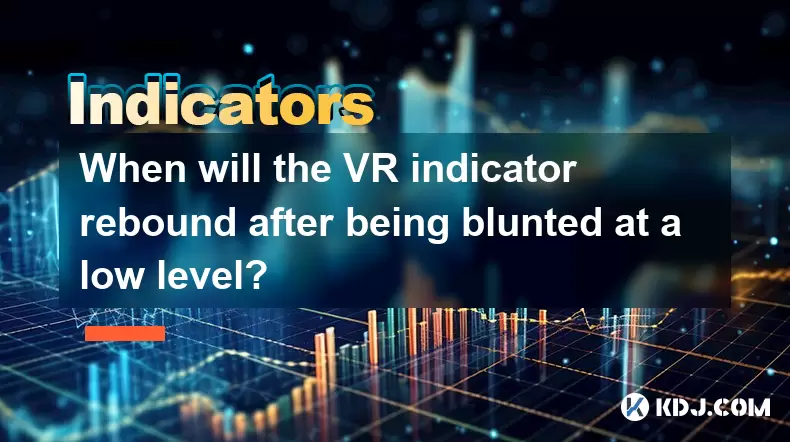
When will the VR indicator rebound after being blunted at a low level?
Jun 16,2025 at 04:08pm
Understanding the VR Indicator in Cryptocurrency TradingThe VR (Volume Ratio) indicator is a crucial analytical tool used by cryptocurrency traders to gauge market sentiment based on volume. It calculates the ratio of up-volume to down-volume over a specified period, typically 14 or 26 days. When the VR value falls below a certain threshold—often interp...

What does the appearance of the double bottom pattern of the WR Williams indicator mean? Can I buy the bottom?
Jun 16,2025 at 01:01pm
Understanding the WR Williams IndicatorThe WR (Williams %R) is a momentum oscillator used in technical analysis to identify overbought and oversold levels in trading. Developed by Larry Williams, this indicator oscillates between 0 and -100. A reading above -20 typically indicates overbought conditions, while a reading below -80 signals oversold territo...

Does the flattening of ADX in DMI mean that the trend is suspended?
Jun 16,2025 at 02:07pm
Understanding the ADX and DMI IndicatorsThe ADX (Average Directional Index) is part of the DMI (Directional Movement Index) system developed by J. Welles Wilder to measure trend strength. The DMI itself consists of three components: the +DI (Positive Directional Indicator), -DI (Negative Directional Indicator), and the ADX line. While the +DI and -DI he...

What to do if CCI hovers below the zero axis for a long time?
Jun 16,2025 at 04:05pm
Understanding the CCI Indicator in Cryptocurrency TradingThe Commodity Channel Index (CCI) is a versatile technical indicator used extensively in cryptocurrency trading to identify overbought or oversold conditions, as well as potential trend reversals. When the CCI hovers below the zero axis for an extended period, it can signal a prolonged bearish sen...

Can I follow the MFI if it is overbought but funds continue to flow in?
Jun 16,2025 at 03:07pm
Understanding the MFI Indicator in Cryptocurrency TradingThe Money Flow Index (MFI) is a technical indicator used extensively in cryptocurrency trading to measure buying and selling pressure. It combines price and volume data to assess overbought or oversold conditions. Typically, an MFI reading above 80 indicates overbought territory, while below 20 su...

Is the market definitely oversold when PSY is below 25?
Jun 16,2025 at 03:43pm
Understanding the Psychological Line (PSY) IndicatorThe Psychological Line (PSY) is a momentum oscillator used in technical analysis to gauge investor sentiment. It measures the ratio of days when the price closes higher versus the number of days it closes lower over a specific period, typically 12 or 25 trading days. The resulting value ranges from 0 t...

When will the VR indicator rebound after being blunted at a low level?
Jun 16,2025 at 04:08pm
Understanding the VR Indicator in Cryptocurrency TradingThe VR (Volume Ratio) indicator is a crucial analytical tool used by cryptocurrency traders to gauge market sentiment based on volume. It calculates the ratio of up-volume to down-volume over a specified period, typically 14 or 26 days. When the VR value falls below a certain threshold—often interp...
See all articles

























































































